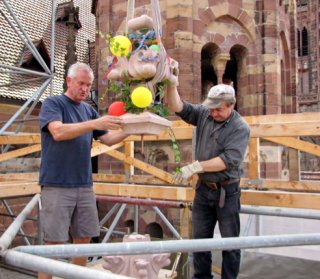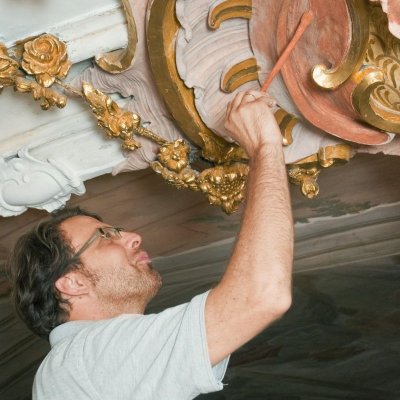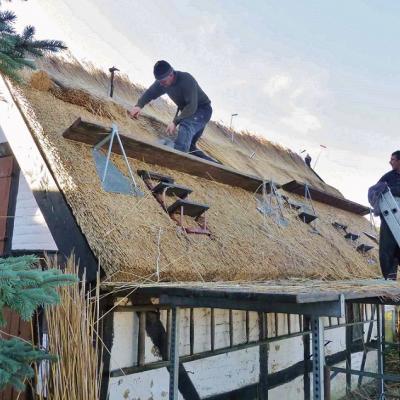Register of Good Safeguarding Practices
Construction Workshops (called “Bauhütten”) – Transmission, Documentation, Preservation and Fostering of Craft Techniques and Knowledge

For centuries, construction workshops, mainly related to cathedrals, such as in Ulm, Freiburg or Cologne, safeguard craft techniques, traditional knowledge and customs in connection with the construction and preservation of large-scale buildings. This tradition continues to the present day. In these workshops that permanently work to maintain one building, stonemasons, carpenters, blacksmiths, stone restoration specialists, tower wardens and construction helpers work hand in hand on a task and form a working as well as a social community with firmly anchored rituals, celebrations and forms of communication.
Facts & Figures
Crucial date: all season
Inscription: 2018
Where to find: nationwide (also abroad)
Contact
Evangelische Gesamtkirchengemeinde Ulm
Ernst-Wilhelm Gohl
E-Mail
Homepage
Metropolitankapitel der Hohen Domkirche Köln
Peter Füssenich
E-Mail
Homepage
Freiburger Münsterbauverein
Anne-Christine Brehm
E-Mail
Homepage
Verein zur Erhaltung des Xantener Domes e.V.
Johannes Schubert
E-Mail
Homepage
Dombauhütte Aachen
Helmut Maintz
E-Mail
Homepage
Münsterbauhütte Heilig Kreuz Schwäbisch Gmünd
Paul Philipp Waldenmaier
E-Mail
Homepage
In addition to the close proximity to the building, the workshops have a transregional and international reach: The knowledge and experience and the constant recruitment of traveling craftsmen, both apprentices and masters, has been practiced since the Middle Ages. The high mobility of master builders and stonemasons has led to the spread of specialized knowledge and skills throughout Europe. To date, there is a close connection and extensive cooperation of the “Bauhütten” within Europe. The individual workshops maintain a professional exchange and collegial contact with each other - especially through a mutual exchange of journeymen. Organized in the "Dombaumeister e.V.", members of this association meet annually for a conference.
The workers of the construction workshops with their knowledge, skills and their personal ties to the building – referring to it as "their" minster or "their" cathedral – are playing a major part in the model’s success and longevity. Many have been working at the workshops for decades or return after their wanderings as journeymen back to the workshop where they were trained. The German construction workshops with their efforts to document and safeguard the craft techniques, its youth and transmissions activities, its networking with politics, industry and other building workshops, offer a transregional model for the safeguarding and sustainable care of Intangible Cultural Heritage.
Although the work in the workshops is characterized by a sense of tradition, it is constantly developing further in its social context and technical repertoire.
With the introduction of the Gothic architectural style and the boom of urbanisation in the 13th century, a new type of collaborative and highly specialized form of construction organization and execution was developed: the construction workshops that are related to only one building. They replaced the wandering builders of the Romanesque period and amateur construction activities. Central to the stability and success of the construction workshop system was and still is the qualified education and further training of junior staff, in which the knowledge and technical skills of the experienced construction and metallurgical masters are systematically passed on to the apprentices. The master-apprentice hierarchy as well as the journeymen’s wanderings that are practiced until today both find their origin in the construction workshops. In the age of industrialization and mass production when the work on cathedrals and minsters from the Gothic era was resumed, the founding of new construction workshops became an important link back to the traditions of the medieval workshops.
Modern construction workshops are open to new methods and innovative working techniques. Due to the decreasing skills in traditional crafts and the cost and time pressure in traditional stonemasonry, the construction workshops in Germany today can be called "competence centres for natural stone" in which the knowledge for stone processing is (further) developed, tested, stored and passed on.
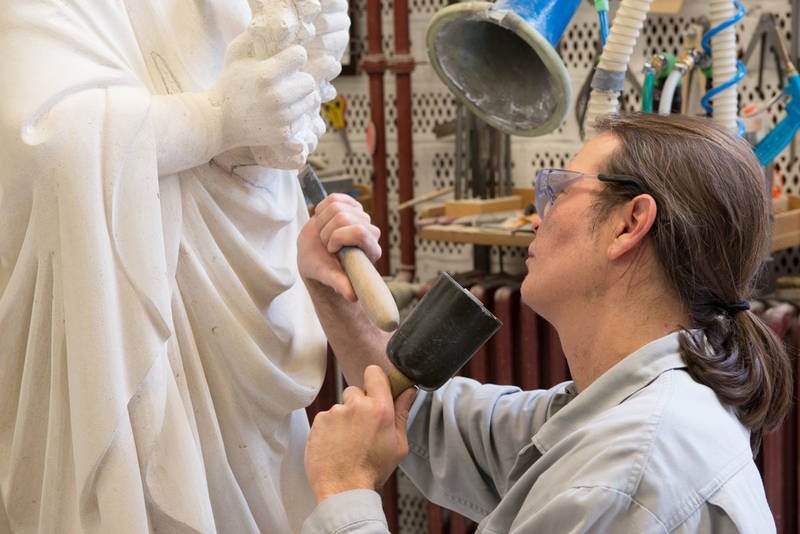
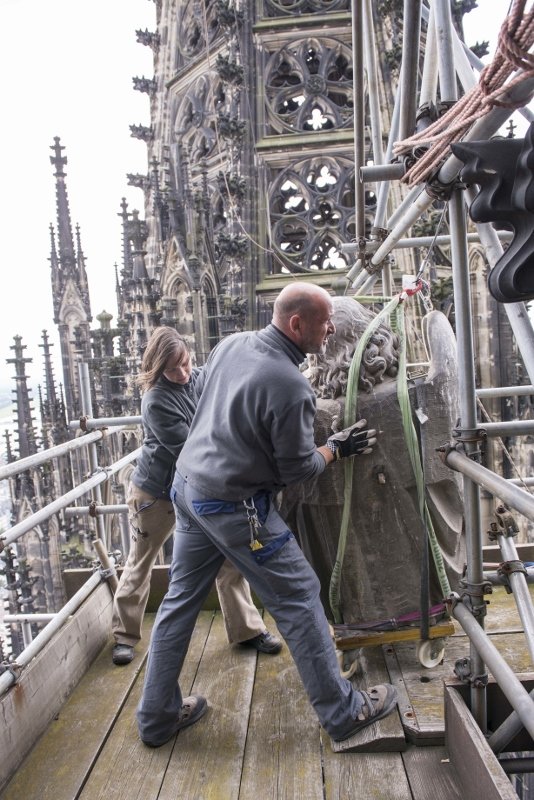
Large buildings without their own construction workshops and a documentation inevitably work less predictably and sustainably: damages are often recognized too late, restoration measures are usually fragmented, responsibilities are not always clear and decision-making processes often take longer. As an example for a good safeguarding practice, the few large, still active workshops in Germany with their international appeal and networking thus exemplarily reflect the objectives of the Convention for the Safeguarding of Intangible Cultural Heritage. The workshops as a good practice example for the safeguarding of intangible cultural heritage exemplify the efficiency and quality of traditional craftsmanship and the importance of the workshops for the understanding and preservation of complex large-scale buildings. The qualification of apprentices as well as the celebration of rituals such as the “Lossprechung” (absolution ceremony) not only safeguard knowledge and skills and their further development but also contribute to the identification with the construction workshops as an institution with a centuries-long history.



